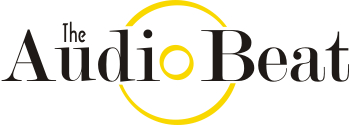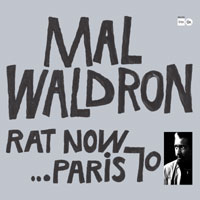Mal Waldron • Rat Now . . . Paris 70
This new release from Sam Records is of an Office de radiodiffusion-télévision française (ORTF) recording made at the Festival International Du Son. The festival ran from 1958 to 1987, and this performance took place at the L’Hôtel Du Palais D’Orsay, near the Museum D’Orsay, on March 10, 1970. Waldron is accompanied by Jean-François on bass and Christian Vander on drums. The trio plays four Waldron compositions. Waldron’s debt to Mingus is on full display, with the overall feel nicely summed up in the liner notes as minimalistic and impressionistic yet playful. Waldron had been playing with these sidemen for a while, and their cohesion shows. While I have not heard all of Waldron’s titles as a leader, this is among the very best -- musically and sonically -- that I recall. Incredibly, this is the first release of this performance and reflects yet another great discovery by Fred Thomas, head of Sam Records. It's an exceptional performance that sounds like it could have been captured and released yesterday. The recording, made in a high-end hotel salon, lacks the perfect soundstage of the best studio recordings, but it is a remarkably good-sounding performance. Each instrument is well defined in space, especially the piano and bass. The recording was remastered by François-Lê Xuân at Studio 101, cut by Kevin Gray at Cohearant Mastering, and pressed in Marciac, France by Garcia & Co., in a run of 3000 copies. Gray worked from high-resolution digital files made from the original master tapes at Institut national de l'audiovisuel (INA), the repository of all French radio recordings. For those who hold their noses at the hint of a digital stage in their vinyl recordings, digital was necessary here to clean up an imperfect tape, not to provide cover for an unlimited number of pressings. As usual with Sam Records, the packaging and pressing quality are state of the art. As this is a first release of the album, new foldout cover artwork was commissioned. The glossy silver cover and unique fonts make this cover more poster art than protective sleeve. Open the cover and you expose a photo of Waldron crossing the street in front of the famed Aux Deux Magots Cafe in the Saint Germain district of Paris. It practically oozes period cool. For jazz fans wishing to branch out and hear something
new and different, rather than the tenth version of a well-worn jazz classic, Sam Records
is a godsend. This is among the label's best releases. |

 al (short for
Malcolm) Waldron was born in 1925, a propitious time for jazz musicians. Waldron came of
age at the very peak of both the development of modern jazz and the long-playing album or
“LP.” After earning his college degree in music, he toyed with R&B, but he
pretty quickly moved to jazz, playing alongside many of the greatest leaders. In the early
1960s, a heroin overdose put him out of commission for a few years, after which he
migrated to Europe. He recorded about seventy albums as a sideman and another hundred as a
leader, including the first releases from ECM and Enja Records. He produced memorable LPs
alongside saxophonist Steve Lacy and vocalist Jeanne Lee. His recordings with Billie
Holiday, Abbey Lincoln and Lee place him firmly among the greatest vocal accompanists of
all time.
al (short for
Malcolm) Waldron was born in 1925, a propitious time for jazz musicians. Waldron came of
age at the very peak of both the development of modern jazz and the long-playing album or
“LP.” After earning his college degree in music, he toyed with R&B, but he
pretty quickly moved to jazz, playing alongside many of the greatest leaders. In the early
1960s, a heroin overdose put him out of commission for a few years, after which he
migrated to Europe. He recorded about seventy albums as a sideman and another hundred as a
leader, including the first releases from ECM and Enja Records. He produced memorable LPs
alongside saxophonist Steve Lacy and vocalist Jeanne Lee. His recordings with Billie
Holiday, Abbey Lincoln and Lee place him firmly among the greatest vocal accompanists of
all time.